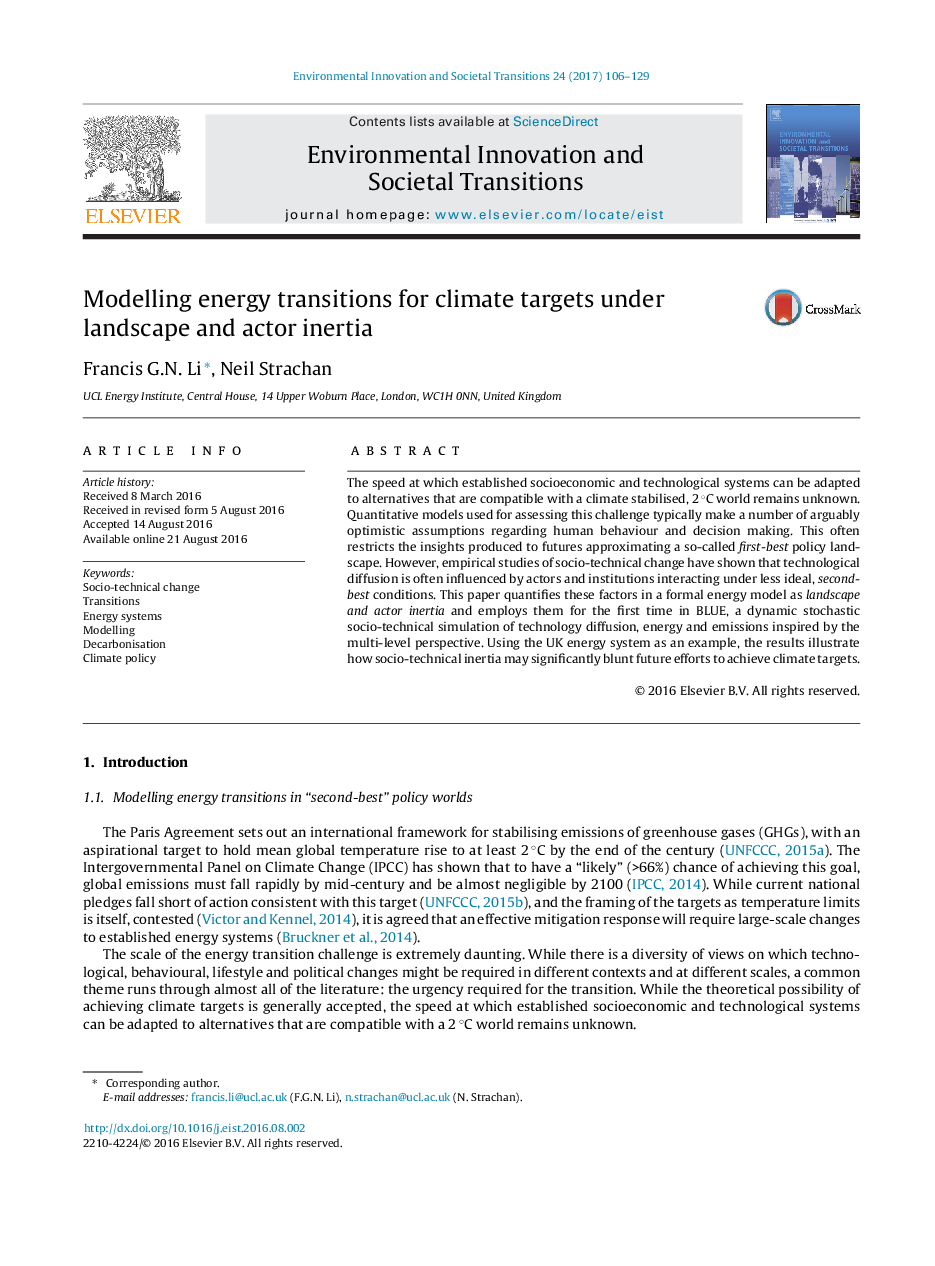| Article ID | Journal | Published Year | Pages | File Type |
|---|---|---|---|---|
| 6464197 | Environmental Innovation and Societal Transitions | 2017 | 24 Pages |
â¢We present a quantitative socio-technical energy transitions model inspired by the Multi-Level Perspective.â¢BLUE is a stochastic system dynamic model that features multiple actors with detailed behavioural parameters.â¢The feasibility of UK climate targets is explored under landscape and actor inertia.â¢The results show that actor inertia may significantly increase the difficulty of achieving climate targets.â¢The results also show the importance of taking socio-technical perspectives on energy transitions.
The speed at which established socioeconomic and technological systems can be adapted to alternatives that are compatible with a climate stabilised, 2 °C world remains unknown. Quantitative models used for assessing this challenge typically make a number of arguably optimistic assumptions regarding human behaviour and decision making. This often restricts the insights produced to futures approximating a so-called first-best policy landscape. However, empirical studies of socio-technical change have shown that technological diffusion is often influenced by actors and institutions interacting under less ideal, second-best conditions. This paper quantifies these factors in a formal energy model as landscape and actor inertia and employs them for the first time in BLUE, a dynamic stochastic socio-technical simulation of technology diffusion, energy and emissions inspired by the multi-level perspective. Using the UK energy system as an example, the results illustrate how socio-technical inertia may significantly blunt future efforts to achieve climate targets.
